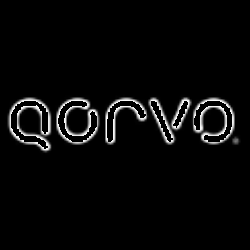Qorvo's business quality is supported by a strong market position and growth in defense and aerospace, but faces challenges with reliance on Android revenue and high customer concentration. Future prospects remain positive with growth opportunities in HPA and automotive, though uncertainties in market demand and increased competition pose risks.
Analysis Date: January 28, 2025
Last Updated: March 12, 2025
Trailing Twelve Months (TTM) values provide a view of the company's performance over the last year.
Graham Value Metrics
Benjamin Graham's value investing approach focuses on finding stocks with a significant margin of safety between their intrinsic value and market price.
Intrinsic Value
Estimated fair value based on Graham's formula
$11.01
Current Market Price: $55.79
IV/P Ratio: 0.20x (>1.0 indicates undervalued)
Margin of Safety
Gap between intrinsic value and market price
-407.0%
Graham recommended a minimum of 20-30% margin of safety
Higher values indicate a greater potential discount to fair value
ROE: 0.7802950417433269
ROA: 0.6921069189561933
Gross Profit Margin: 41.667675772361584
Net Profit Margin: 0.7119141745713279
Trailing Twelve Months (TTM) values provide a view of the company's performance over the last year.
Good Gross Profit Margin
41.67
Gross Profit Margin
The gross profit margin of 41.67% shows that the company retains a substantial portion of revenue as profit after accounting for the cost of goods sold.
Low Net Profit Margin
The net profit margin of only 0.71% indicates that the company is struggling to convert sales into actual profit, which can be a concern for long-term sustainability.
Low Return on Equity
The return on equity (ROE) of 0.78% is significantly low, suggesting that the company is not efficiently generating profits from its equity base.
About Profitability Metrics
Profitability metrics measure a company's ability to generate earnings relative to its revenue, operating costs, and other relevant metrics. Higher values generally indicate better performance.
Return on Equity (ROE)
Measures how efficiently a company uses its equity to generate profits
0.78%
10%
15%
Higher values indicate better returns for shareholders
TTM (as of 2025-04-16)
Return on Assets (ROA)
Measures how efficiently a company uses its assets to generate profits
0.69%
3%
7%
Higher values indicate better asset utilization
TTM (as of 2025-04-16)
Gross Profit Margin
Percentage of revenue retained after accounting for cost of goods sold
41.67%
20%
40%
Higher values indicate better efficiency in production
TTM (as of 2025-04-16)
Net Profit Margin
Percentage of revenue retained after accounting for all expenses
0.71%
8%
15%
Higher values indicate better overall profitability
TTM (as of 2025-04-16)
Strong Liquidity Ratios
The current ratio of 2.60 and quick ratio of 1.78 indicate that the company has a strong ability to cover its short-term obligations, suggesting good liquidity.
Moderate Debt Levels
0.46
Debt-to-Equity Ratio
0.26
Debt-to-Assets Ratio
With a debt-to-equity ratio of 0.46 and debt-to-assets ratio of 0.26, the company has manageable debt levels but should be cautious about increasing leverage in a rising interest rate environment.
About Financial Health Metrics
Financial health metrics assess a company's ability to meet its financial obligations and its overall financial stability.
Debt to Equity Ratio
Total debt divided by total equity
0.46x
1.0x
2.0x
Lower values indicate less financial leverage and risk
Less than 1.0 is conservative, 1.0-2.0 is moderate, >2.0 indicates high risk
Q3 2025
Current Ratio
Current assets divided by current liabilities
2.60x
1.0x
2.0x
Higher values indicate better short-term liquidity
Less than 1.0 is concerning, 1.0-2.0 is adequate, greater than 2.0 is good
Q3 2025


